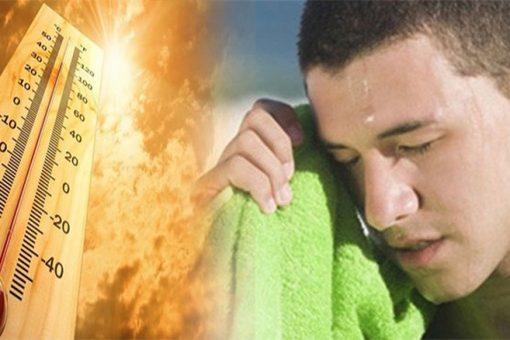One of the great joys of being outdoors is basking in the soft, warm glow of the sun. But like so many of life’s pleasures, it’s best done in moderation. Sunlight includes rays of ultraviolet (UV) radiation, and exposure to those rays can lead to sunburn, premature skin aging and skin cancer.
Choosing clothing that has been designed for sun protection and tested to confirm its Ultraviolet Protection Factor (UPF) will give you greater control over your overall level of UV exposure.
This article by REI Expert will cover:
- Who can benefit by wearing UPF clothing (pretty much everyone)
- What UPF ratings mean
- UPF clothing features
- Factors that reduce and enhance sun protection
Who Can Benefit from UPF Clothing

UPF-rated clothing enhances everyone’s protection against UV-related health risks, but it is especially helpful for:
- Sun-sensitive people: People with fair skin that burns easily are more vulnerable to UV rays.
- Children: Kids have thinner, more sensitive skin. Damage at an early age can also increase their risk of more serious problems later in life.
- People at high elevations, in equatorial regions, or on snow or water: Sun intensity is greater in each of these environments.
- People taking medications: Sun sensitivity is increased by a wide range of drugs, including acne treatments, antihistamines, antibiotics, certain anti-inflammatories, even herbal supplements. Double-check all your medications for cautions about the sun.
Caution: People with dark skin tones, who might rarely show signs of burning, can still develop skin cancer. So they, too, will benefit by being proactive about sun protection.
What UPF Ratings Mean
UPF is the rating system used for apparel. It’s similar to SPF (Sun Protection Factor), the rating system used for sunscreen products. SPF pertains only to a sunscreen’s effectiveness against UVB rays, considered to be the more damaging type of light. UPF, though, gauges a fabric’s effectiveness against both ultraviolet A (UVA) and ultraviolet B (UVB) light.
When you shop, things are relatively simple: Look for a higher UPF rating number in order to get better sun protection.
| UPF Rating | Protection Category | Effective UV Transmission (%) |
| 15, 20 | Good | 6.7-4.2 |
| 25, 30, 35 | Very Good | 4.1-2.6 |
| 40, 45, 50, 50+ | Excellent | Less than 2.5 |
A UPF rating of 25 indicates the fabric of a garment will allow 1/25th (roughly 4 percent) of available UV radiation to pass through it. A garment rated UPF 50 permits only 1/50th (roughly 2 percent) UV transmission. Any fabric that allows less than 2 percent UV transmission is labeled UPF 50+.
Why you don’t see ratings below UPF 15: Fabrics rated below UPF 15 are not considered UV-protective. A typical white cotton T-shirt, for example, offers about a UPF 5 rating, which means that 20 percent (1/5) of available UV radiation passes through it.
Factors that enhance UPF ratings: As a shopper, you only need to look at the UPF spec on a garment. Clothing makers will already have considered the following factors in trying to achieve that level of sun protection:
- Construction: Dense, tight construction minimizes the amount of UV light that can pass through. Thicker fabrics also reduce UV transmission.
- Color: Generally, darker colors absorb more rays overall, including UV rays. Within the same color, more vibrant hues outperform paler ones.
- Treatments: Chemicals and dyes that are effective at absorbing UV light can be added to enhance UPF.
- Fiber type: Polyester does an excellent job at disrupting UV light, as does nylon. Wool and silk are moderately effective. Cotton, rayon, flax and hemp fabrics often score low without added treatments.
Factors that reduce UPF ratings: When you’re considering the UPF spec on new clothing or packing your favorite rashguard for a trip to the tropics, be aware of the following:
- Fabric wetness: For many types of materials, wetness can cause a significant reduction in a fabric’s UPF rating. Some studies, though, suggest that polyester may actually protect slightly better when wet.
- Fabric wear: As a fabric becomes worn or faded, it also becomes less effective at blocking UV light.
- Fabric stretch: Stretched fabric can lose a significant amount of its UPF, so considering replacing any item that simply fits too tightly now.
How laundering affects UPF ratings: Washing your clothing can either increase or decrease its UPF, depending on several factors:
- Detergents with brighteners: While most detergents contain them and most brighteners do enhance UPF, there’s no way to tell for certain if a given detergent will enhance your garment’s rating.
- Shrinkage: All else being equal, shrinking a garment gives it a tighter weave, which can increase its UPF.
- Clothing that relies on finishes for its UPF rating: As the finish washes out, UPF diminishes. Check to see if your garment states that its UPF rating is good for a specific number of washes.
- Clothing that relies on inherent fabric properties for its UPF rating: UPF should remain relatively unchanged as a result of washing—until it diminishes simply because the fabric becomes worn or faded.
UPF Clothing Features

- Extended coverage: Some shirts have flip-up sun collars; others might have cuffs that are shaped to extend coverage over the back of the hands. In hats, look for broad brims and neck capes.
- Vents: Tight weaves, thick fabrics and extended coverage also work to heat things up inside, so look for plenty of ventilation options.
- A looser cut: Steer clear of anything that fits too tight because a garment that’s stretched can become significantly less effective at blocking UV light.
- Quick-drying fabrics: Wetness can cause a significant reduction in a fabric’s UPF rating, so having a garment that dries quickly will get you back to your full UPF rating sooner (packing along dry UPF-rated clothing is another strategy).
Sun Protection Beyond UPF Clothing

UPF-rating clothing alone will not fully cover you. Total UV protection requires a multifaceted approach:
- Wear UV-protective clothing.
- Liberally apply sunscreen with a high SPF rating to all exposed areas of skin.
- Wear sunglasses that offer 100 percent UV-ray protection.
- Seek shade whenever possible.
- Monitor—and limit—the amount of time you expose yourself to UV radiation, especially during peak daylight hours—roughly from 9 a.m. to 3 p.m.
- Remember that filtered sun can still damage your skin, so protect yourself on cloudy days, too.
Wearing UV-protective clothing and these other precautions give you a lot of tools to keep your skin healthier. Be smart about the sun and it will be easier to soak up the fun when you’re outdoors.




